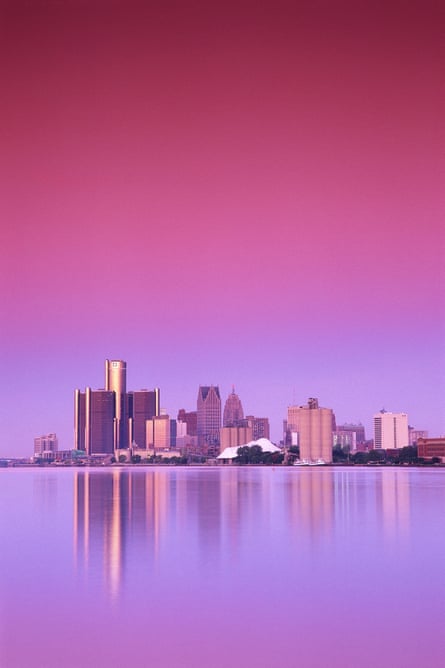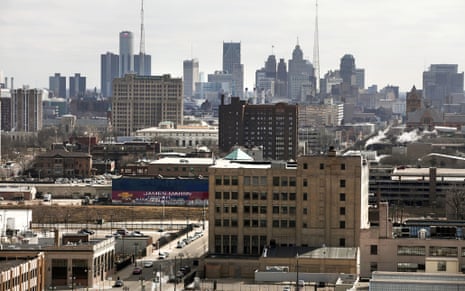Try as you might to hammer Detroit into a single story, it cannot be done. Detroit inspires heated poetry, painstaking realism, stories of the supernatural, riveting non-fiction, and unclassifiable imaginative works. In a city celebrated for its history of making things, the Detroit literary arts are overdue for attention.
Start with Harriette Arnow’s The Dollmaker, the 1954 bestseller which follows a Kentucky family as they migrate north for wartime jobs and settle in the factory housing of “Flint’s Motor Company”. There is a fierce hum behind the unfolding drama of what it means to “adjust” in this crowded alleyway, tucked inside a towering city that styles itself as the engine of the world. Joyce Carol Oates called the book “our most unpretentious American masterpiece,” and she’s right.
Speaking of Oates, she herself lived in and around Detroit for nearly 20 years, and has written her most interesting books here. Look for the Wonderland Quartet, her loosely arranged series examining social class. Them is a glowering, languid novel of mid-century Detroit which straddles economic extremes as it steams toward a cataclysmic unraveling during the July 1967 uprising. In Expensive People, Oates spins a gothic tale about the leafy upscale suburbs; the exaggerated doom has a Nabokovian ring. Jeffrey Eugenides also turned his attention to the Detroit suburbs in both The Virgin Suicides and Middlesex, and he too dramatised July 1967, as does Bill Morris in Motor City Burning. Meanwhile, Pearl Cleage, who holds court in a number of genres, sets novels in Idlewild, the real-life African American resort community in Northern Michigan where sophisticates of Detroit and far beyond vacationed. Angela Flournoy is making waves with her new novel, The Turner House, about an east-side neighborhood. Elmore Leonard is celebrated for his crime novels, including City Primeval: High Noon in Detroit. But read him alongside Donald Goines, who was essentially writing in the same mode at the same time, but for a predominantly African American audience.
Novelists from Africa have also had their imaginations ignited by Detroit. In NoViolet Bulawayo’s acclaimed We Need New Names, Darling, a teenager from Zimbabwe, finds herself in the care of her aunt in Detroit, Michigan (“Destroyedmichigan”), where she is struck by the dissonance between abundance and scarcity. In Broken Monsters by Lauren Beukes, a grotesque crime brushes against Detroit’s arts culture and the fervour of modern media. Stephen King declared the book to be “scary as hell and hypnotic”, but it’s the authentic voices of teenagers that Beukes does best. Into the Go-Slow looks in the other direction, as Bridgett M Davis tells a story of the tough aftermath of a young Black Power activist in Detroit moving to Lagos.

In poetry, it’s tough to keep up. There is Robert Hayden, the near-sighted man from Paradise Valley who grew up to become America’s first African American poet laureate. There is Dudley Randall, whose Broadside Press was revolutionary in publishing African American poets. (Melba Joyce Boyd, a poet in her own right, chronicles the Broadside story beautifully in Wrestling With the Muse.) Philip Levine found the great subject of his life by working in Detroit industry. Marge Piercy brings an activist sensibility to the poetry of the personal. Jamaal May finds music in the urban soundscape in Hum and francine j harris’s Allegiance is a book of rich emotional archeology. Vievee Francis will shatter you with her wisdom and poetic force. Tarfia Faizullah’s Seam is profoundly but unsentimentally beautiful. And Matthew Olzmann summons humour, surprise, and insight in Mezzanines.
David Small, the award-winning children’s book illustrator, wrote his first full-length graphic work for adults, Stitches, about his astonishing upbringing in Detroit, set against the city’s filmic background. Small relays the true story of when, aged 14, he awoke from what he thought was a harmless operation to find a thick scar upon his throat and a vocal cord removed. After being treated for a cancer no one told him he had, Small is now mute. Stitches depicts the brutal and haunting silences of what came before and after.
Elsewhere in non-fiction, The Origins of the Urban Crisis by Thomas J Sugrue is a benchmark work, but also check out Living for Change and The Next American Revolution by legendary Detroiter Grace Lee Boggs. And don’t forget Kevin Boyle’s riveting Arc of Justice: A Saga of Race, Civil Rights, and Murder in the Jazz Age.
And there’s nothing like a drama to capture the full scope of Detroit. Dominique Morisseau wrote the celebrated Detroit ’67, a play where Motown groove is juxtaposed with the pent-up anger of family and city. It is the first of a three-part cycle that Morisseau is developing about her home town. Next up is Paradise Blue, about jazz musicians in 1949 whose thriving artistic neighbourhood is about to be paved over as part of urban renewal, and the third, Skeleton Crew, focuses on car workers in the last exporting factory in the city. Meanwhile, Lisa D’Amour was a Pulitzer finalist for Detroit: A Play, a black comedy set at a barbecue in an unnamed suburb at the beginning of the Great Recession.
The joy of writing about these extraordinary works of art is that the minute I finish, it will be out of date. More stories are coming out of the city every day.
- Anna Clark is the editor of A Detroit Anthology, a 2015 Michigan Notable Book, and author of Michigan Literary Luminaries: From Elmore Leonard to Robert Hayden. She tweets at @annaleighclark.

Comments (…)
Sign in or create your Guardian account to join the discussion